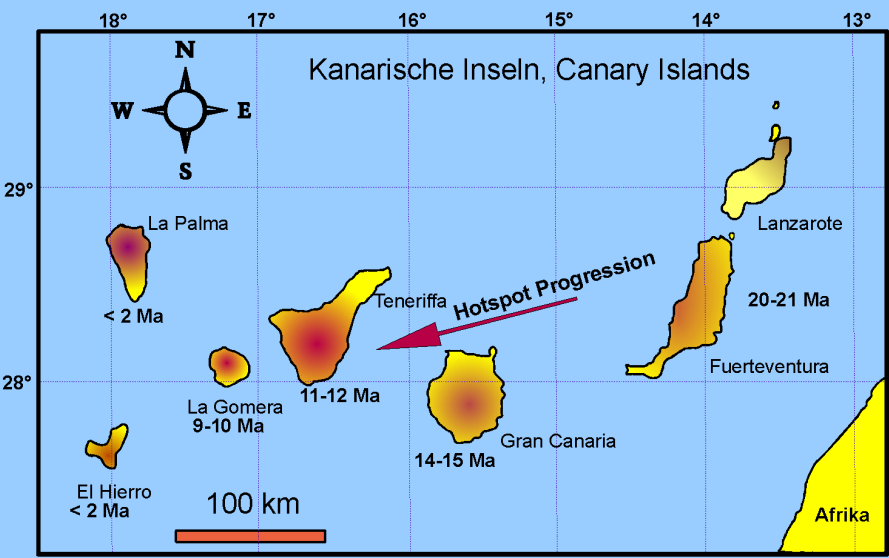A collectors perspective
by Volker Betz
Lanzarote
Fuerteventura
Gran Canaria
Teneriffa
La Gomera
La Palma
El Hierro
Paragenesis
Literature

Modified map after Carracedo et al. (2001)
| Home | Occurences | World | Atlantic Islands | Canary Islands |
| Zeolites and other Minerals from the Canary Islands, (Spain) A collectors perspective by Volker Betz |
|
| The Canary Islands are of
volcanic origin and have been visited by resarchers from the
beginning of the 19th century. The most famous was Alexander von
Humboldt on it´s way to South America. Zeolites from the carary Islands have first been
mentioned by Leopold von Buch, which spent several months on the
Islands, namely Gran Canaria and Teneriffa during the year 1815.
The many Vulcanologists and Geologist which visited
the Canariy Islands, did not report much concerning the
occurence of zeolites and other minerals.
Only some mineral collectors which came as tourists,
recognized the minerals and reported about it. It seems that the occurrence of Zeolites is limited to the older
islands from Lanzarote to La Gomera, which are in the status of erosion
and have provided the hydrothermal conditions for zeolite-growth in cavities of the rock.
The much younger islands of La Palma and La Gomera
are still in a growth phase with very little hydrothermal
conditions for zeolite growth. This is similar on Iceland, where the
occurrence of the famous zeolites is restricted to the older basalts of this Island. |
|
| Canary Islands Lanzarote Fuerteventura Gran Canaria Teneriffa La Gomera La Palma El Hierro Paragenesis Literature |
 |
| Home | The
Canariy Island ad their development in time. The eastern islands are
20-21 Million years old. La Palma and Fuerteventura less
than 2 Million years. This can be explained by a hotspot progession
over that period of time.. Modified map after Carracedo et al. (2001) |
| Canary Islands at Mindat.org | The Canary Islands Hot Spot |